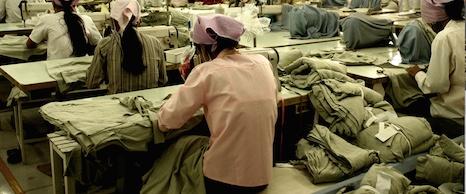
By Brian Collett — India has set itself a goal of eliminating child slavery by ratifying two global agreements on the employment of minors.
The last census in 2011 showed India had four million workers aged five to 14, but other estimates put the figure millions higher because of poverty.
Now India must observe a minimum working age, varying from 13 to 18 depending on the employment type, and a ban on minors in dangerous areas, including armed conflict, prostitution and drug trafficking, under the two agreements – the Convention on the Worst Forms of Child Labour and the Minimum Age Convention, both drawn up by the International Labour Organisation.
All signatories to the conventions must have their progress scrutinised by other nations every four years.
India, which is estimated to have more than 18.3 million people in slavery, the world’s highest number for one nation, had resisted signing up to the conventions as there was a general denial that the country’s employers used child labour.
Labour minister Bandaru Dattatreya has finally affirmed India’s “commitment to a child labour-free society”.
The ratifications will compel the government to spend more on children’s services and will equip charities to strengthen child labour policies in the courts.
Increasing prosperity arising from India’s economic boom during the past 20 years has brought social welfare schemes and laws protecting minors and providing education.
However, the children remain easy prey to traffickers, who promise a better life but sell them into forced labour and debt bondage, and unscrupulous employers on farms and in factories, restaurants, hotels, domestic service and even brothels.
At the same time, finding exploited workers, adults and children, in India’s brick industry will be made easier by a Nottingham University device using satellite imagery to track kilns.
Abuse in the kilns, already notorious for bonded labour and appalling conditions, is expected to worsen as the world building boom intensifies demand for India’s trademark red bricks.
The technology can locate the kilns and pass the information to government inspectors. Professor Doreen Boyd, of the university’s Slavery from Space project, said: “There are certainly activists on the ground who will help us in terms of getting the statistics and the locations of these brick kilns to officials.”
More technology from the university will help UK government agencies to discover modern slavery without the need to enter premises, particularly in low-price car washes, where employees are paid poorly and have little or no protective equipment.
A computer programme analyses car wash prices, data given by the company to the tax and other authorities, and activities observed by investigators.
Dr. Alexander Trautrims, a supply chain management expert at the university’s business school, said: “You could, for example, scrutinise the costs the company is claiming to the tax office for personal protection equipment and then the size of the car park, and you could make the assumption that there isn’t enough protection for the people who work there.
“Or you could do it the other way around and say that maybe there are more workers in there than you say there are – and why aren’t they being accounted for?”
Dr. Trautrims points out: “Although they might not be aware of it, people are faced with modern slavery in their everyday lives.”
Detective Superintendent Austin Fuller, of Nottinghamshire police, said: “We are really excited about piloting this new programme.”
The technology is being considered too for spotting slave labour in Spanish agriculture. It could show that slaves are being used if there is not a reasonable match between the number of workers registered and the amount of fruit produced by a farm.
In Australia, meanwhile, the government is considering modern slavery legislation similar to that in the UK and the United States.
New laws would require companies to report that their global supply chains are free of slavery and human trafficking and to disclose their methods of gathering the information and assurances.
Australian attorney general George Brandis has asked the foreign affairs, defence and trade joint standing committee to do the research for framing the legislation.
Besides supply chain transparency, the researchers will look at the nature and extent of modern slavery in Australia and elsewhere, international best practice for businesses, governments and other organisations, and compensation for modern slavery victims.
Strong interest has already been expressed by retailers, financial institutions, non-profit groups, universities, law firms and other governments.
According the Modern Slavery Index, over 40 million people are in modern slavery globally.
TriplePundit has published articles from over 1000 contributors. If you'd like to be a guest author, please get in touch!














